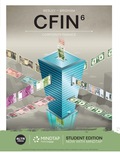
Marginal Cost of Capital (MCC) is the weighted average cost of capital for the last dollar raised in new capital. MCC of the company remains constant for some time after which it increases. This depends on the amount of additional capital raised and eventually increases as the cost of raising new capital is higher due to flotation cost. This is mostly evident in case of
Marginal cost of capital is calculated as below:
Proportion of debt in the target capital structure “
Proportion of
Proportion of common equity in the target capital structure “
After tax cost of debt, preferred stock, retained earnings and new equity is “
Breakpoint is the value of the new capital that can be raised just before an increase in the firm’s weighted average cost of capital.
Investment Opportunity Schedule (IOS) is then created to show how much money a company can invest in at different rates of return (IRR), this schedule is then merged with MCC schedule. The cost of capital at the intersection of both the schedules is the optimal cost of capital, which is used to find out the right mix of financing and therefore, the investment will be optimal. Hence, Optimal Capital Budget is that level of capital at which the marginal cost of capital is equal to the marginal revenues.
The company is evaluating a project to increase its sales. The cost of the project is $2.6 million with an IRR of 9.50%. Any portion of the project can be purchased. The company expects to raise up to $420,000 in new debt at a cost of 5% and anything above this at a cost of 7%. Similarly, it expects retained earnings of $1.3 million this year, with cost of retained earnings beingn12% and cost of any new common equity being 14%. Target capital structure is 35% debt and 65% equity. Marginal tax rate is 40%.
Want to see the full answer?
Check out a sample textbook solution
- Crenshaw, Incorporated, is considering the purchase of a $367,000 computer with an economic life of five years. The computer will be fully depreciated over five years using the straight-line method. The market value of the computer will be $67,000 in five years. The computer will replace five office employees whose combined annual salaries are $112,000. The machine will also immediately lower the firm's required net working capital by $87,000. This amount of net working capital will need to be replaced once the machine is sold. The corporate tax rate is 22 percent. The appropriate discount rate is 15 percent. Calculate the NPV of this project. Note: Do not round intermediate calculations and round your answer to 2 decimal places, e.g., 32.16. NPV Answer is complete but not entirely correct. S 103,141.80arrow_forwardYour firm is contemplating the purchase of a new $610,000 computer-based order entry system. The system will be depreciated straight-line to zero over its five-year life. It will be worth $66,000 at the end of that time. You will save $240,000 before taxes per year in order processing costs, and you will be able to reduce working capital by $81,000 (this is a one-time reduction). If the tax rate is 21 percent, what is the IRR for this project? Note: Do not round intermediate calculations and enter your answer as a percent rounded to 2 decimal places, e.g., 32.16. IRR %arrow_forwardQUESTION 1 Examine the information provided below and answer the following question. (10 MARKS) The hockey stick model of start-up financing, illustrated by the diagram below, has received a lot of attention in the entrepreneurial finance literature (Cumming & Johan, 2013; Kaplan & Strömberg, 2014; Gompers & Lerner, 2020). The model is often used to describe the typical funding and growth trajectory of many startups. The model emphasizes three main stages, each of which reflects a different phase of growth, risk, and funding expectations. Entrepreneur, 3 F's Debt(banks & microfinance) Research Business angels/Angel Venture funds/Venture capitalists Merger, Acquisition Grants investors PO Public market Growth (revenue) Break even point Pide 1st round Expansion 2nd round 3rd round Research commercial idea Pre-seed Initial concept Seed Early Expansion Financial stage Late IPO Inception and prototype Figure 1. The hockey stick model of start-up financing (Lasrado & Lugmayr, 2013) REQUIRED:…arrow_forward
- critically discuss the hockey stick model of a start-up financing. In your response, explain the model and discibe its three main stages, highlighting the key characteristics of each stage in terms of growth, risk, and funding expectations.arrow_forwardSolve this problem please .arrow_forwardSolve this finance question.arrow_forward
 EBK CONTEMPORARY FINANCIAL MANAGEMENTFinanceISBN:9781337514835Author:MOYERPublisher:CENGAGE LEARNING - CONSIGNMENT
EBK CONTEMPORARY FINANCIAL MANAGEMENTFinanceISBN:9781337514835Author:MOYERPublisher:CENGAGE LEARNING - CONSIGNMENT
